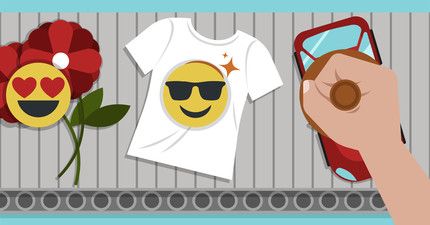
How to Turn Ordinary Products Into Necessities
Today’s brands are no longer selling just the product; they’re selling the smile, the ease, the adventure. They’re selling a feeling. Emotional branding is not a new concept, but many brands still struggle with the idea of moving beyond the shiny new features to tell a deeper, more meaningful story. A story that presents this revolutionary or not-so-revolutionary product as more than just a physical item but a necessity, an extension of life, a piece of us. It’s all about selling the experiences that fulfill a need or desire. How do you move from a culture of product features to the new and colorful world of experiences? Here are three rules to follow to take your product from optional to necessary.
For a marketer, it goes back to sales; for a consumer, it goes back to what they are receiving in return for their purchase. Will this product make my life easier or safer? Will it give me more time with my family? What kind of happy moments will I experience because of the new product? If this product did not exist, what would the world be missing? Taking a more psychological approach ensures you are hitting on something more tangible and real that the consumer needs. Consider Maslow’s Hierarchy of Needs. Does your product fit higher up the hierarchy, such as a shiny new watch that fulfills our need for self-actualization in the workplace or is it a more basic necessity?
Take, for example, a T-shirt. How can a new T-shirt build an emotional connection with the consumer? Actually, the possibilities are endless. Maybe it brings out the artist in your consumer as they wear it to create new masterpieces. Perhaps it empowers them to keep going when they wear it to their next workout. Looked at another way, that simple T-shirt is a superhero costume under their business suit, keeping ‘em cool, calm and collected during big presentations or meetings. Whatever the fabric, whatever the style, don’t market just the shirt, market to who is underneath it and how it makes their life better.
How do you know which emotion to tap into for that new product launch? The Institute of Neuroscience and Psychology identified the four distinct emotions as happy, sad, afraid/surprise and anger/ disgust. Fear and anger are often used to invoke change through public service announcements. Happiness and sadness are the main avenues for products. There are different degrees of each emotion, though. For instance, happiness can be portrayed through optimism, joy, love, trust and interest, whereas sadness can be described as empathy, altruism and wanting to give to others. The feeling of sadness inspires those to act upon a cause and help those in need.
There are two kinds of people; those who you think are purchasing your products and those who are actually purchasing your products. Sometimes, these are the same people. Sometimes, they are not. By executing a brand study, you can understand what consumers think of your brand, your products and how they use them. The intended use of a product isn’t always the reason it is purchased. Don’t fight it, embrace it (as long as the usage is safe). What improvements would the traditional and non-traditional customer like to see? Are there new products that they are hoping for? Once you have the answers to these questions, it becomes easier to create a strategy that positions your product as a necessity.
Take Pedialyte for an example. The children’s electrolyte balancing drink identified that there was another audience that was using their drink, hungover adults. It’s true, many adults use Pedialyte to recover from a night out on the town. Pedialyte has embraced this through social media influencers and even a new product that was created specifically for adults. This was supported by Nielsen numbers showing that adult use of Pedialyte increased by 57 percent by 2015. Now, Pedialyte is a must for those looking for a night of fun without the headache the next day. This is why it is crucial for brands to identify and target under-utilized audiences.
According to Harvard Business School professor Gerald Zaltman, 95 percent of all purchase decisions take place in our subconscious. By taking a user-centric approach to marketing your product, your brand can build or strengthen a relationship with customers old and new. Tell the story of your product and build emotional rapport with the customer. The sale may not be instant, but when people feel a certain emotion or a need, they’ll think of you.
Hoffman York has experience turning everyday products into necessities. See how we turned Napoleon Fireplaces into Hot Spots, places where life’s memorable moments occur, by viewing our case study. How can HY turn your product into a necessity? Contact us at [email protected].